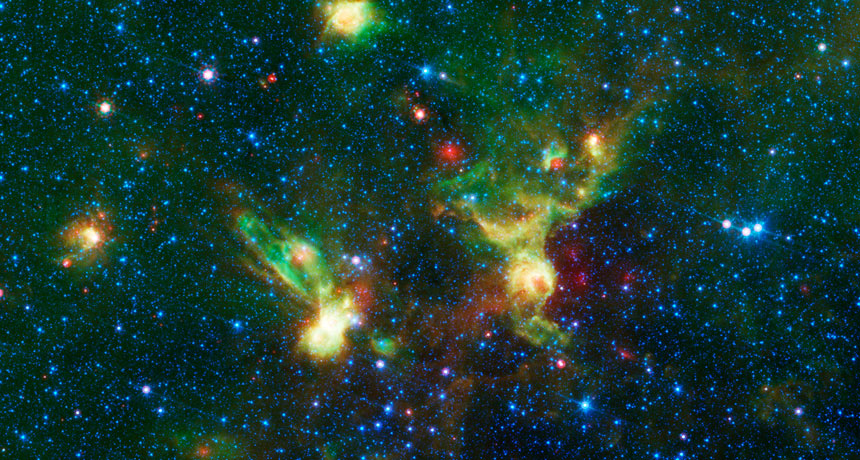James Webb Space Telescope challenges artists to see in infrared
Astronomy artists plan to make raw data beautiful

FIELD OF GREENS Visualizations of images from the upcoming James Webb Space Telescope could look akin to these from the Spitzer Space Telescope. Both telescopes are designed to see in the infrared. In this Spitzer image of the Enterprise nebulae, 3.5 micrometer light is in blue, 8 micrometer light is green and 24 micrometer light is red.
NASA/JPL-Caltech